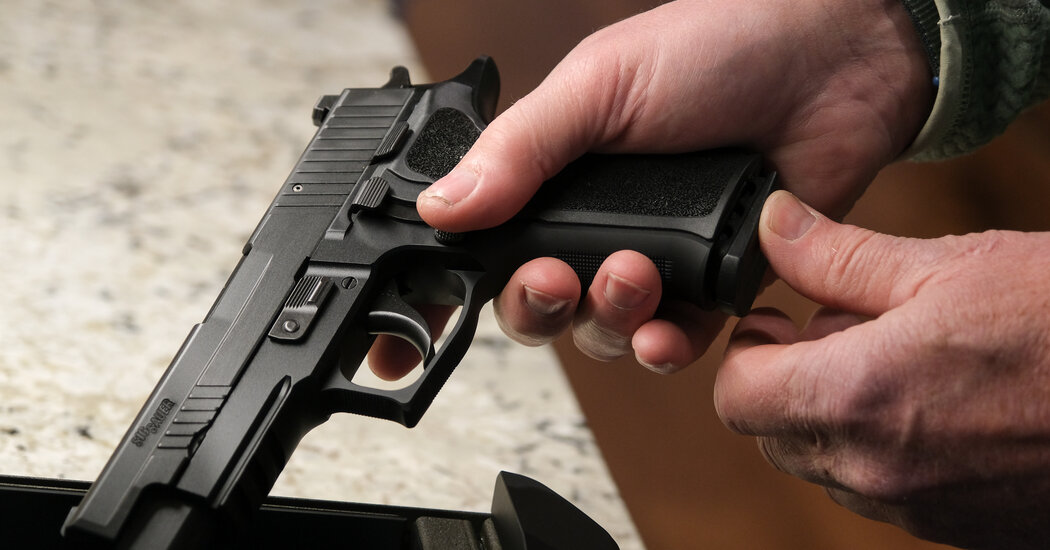Many firearm owners in the United States do not securely store their guns, even when the weapon is kept loaded and there are children in the home, according to a report released on Thursday by the Centers for Disease Control and Prevention.
The report, which relied on data from 2021 and 2022 from eight states, found that many gun owners kept weapons unlocked and loaded in their homes despite rising rates of suicides involving guns and firearm fatalities among children.
Gun storage practices varied across the eight states: Alaska, California, Minnesota, Nevada, New Mexico, North Carolina, Ohio and Oklahoma.
Of those surveyed in Ohio who had both children and a loaded gun in the house, about a quarter said that the weapon was kept unlocked; it was the smallest percentage among the seven states with available data for that metric. In Alaska, more than 40 percent respondents fell into that category.
In all eight states, about half of respondents who reported having loaded firearms in their homes said that at least one loaded gun was kept unlocked, a finding consistent with similar studies about firearm storage behavior.
The number of children who die by suicide has been trending up for more than a decade. In 2022, firearm suicides among children reached the highest rate in more than 20 years, which public health experts and advocacy groups largely attributed to the Covid-19 pandemic and rising gun sales.
A smaller number of children are killed each year by accidental gunfire, which often happens while playing with the weapon or showing it to a friend. A 2023 C.D.C. report on unintentional firearm deaths among children found the involved firearm was often loaded and unlocked on a night stand.
“Storing a firearm out of sight or out of reach is not secure firearm storage,” said Thomas Simon, who is an author of the study and a researcher at the C.D.C.’s Division of Violence Prevention.
“A father told me he didn’t even know his son knew he kept his firearm in the closet until he found his 15-year-old son’s body from a suicide.”
Dr. Frederick Rivara, who studies childhood injury and injury prevention at the University of Washington, said the risk of youth suicide by firearm is far lower in homes where the weapons are unloaded and locked than in households where guns are kept less securely.
Children living in families with no guns in the house are at the lowest risk of firearm suicide, one study found.
Jennifer Stuber, a public health researcher at the University of Washington who studies suicide prevention, said people often keep their guns unsecured in order to have easy access in case of a home intrusion. Protection is the main reason most U.S. gun owners keep a firearm, according to a 2023 Pew study.
That often makes efforts to encourage gun owners to store their firearms unloaded and locked — as is recommended by several groups, including the National Shooting Sports Foundation and the Department of Veterans Affairs — a difficult sell, she said.
Dr. Stuber said she thinks that people often inflate the risk of someone attacking them with a gun and underestimate the odds of their gun killing a loved one.
“I don’t think they really, truly understand the risks,” she said. “People don’t think that their firearms are ever going to be used in suicide until they’re in that place.”
Instead of trying to convince gun owners to stop worrying about self-defense, a better solution, she said, might be to improve access to “fast access locking devices,” which make it easier and faster for people to unlock guns if they need them.
“You’re not trying to change the idea around home defense,” she said. “I think it is possible to do but it’s harder than just giving somebody a technological solution.”







